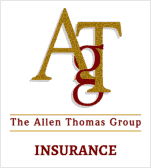The impact of technology on liability insurance is reshaping how general liability policies are structured, especially as emerging risks like deepfake technology and data privacy regulations come into play.
With advancements in InsurTech innovations, businesses must adapt their coverage to address these new challenges effectively.
Key Technological Advancements Influencing Insurance Policies
InsurTech innovations are transforming how insurers assess and manage risks.
Technologies like big data analytics, artificial intelligence (AI), and machine learning help insurers understand customer behavior better.
This understanding leads to more accurate predictions of potential liabilities.
For instance, cybersecurity insurance is now essential as companies face increased threats from cyberattacks.
Insurers are scrutinizing clients’ security measures more closely before providing coverage. This shift emphasizes proactive risk management in technology.
Another critical aspect is data breach liability. With regulations such as GDPR enforcing strict data protection standards, companies must ensure their practices comply or face hefty penalties.
This situation boosts the demand for coverage that addresses both financial losses from breaches and regulatory fines.
Balancing Traditional Coverage with New Tech-Driven Risks
New tech-driven risks require a balance with traditional coverage for businesses that operate online or use advanced technologies.
Financial loss coverage is key; it protects against losses from system failures or poor service delivery linked to digital operations.
Navigating compliance with GDPR adds complexity; businesses must meet strict data privacy regulations while ensuring their general liability policies reflect these requirements accurately.
E-commerce liability has also become more important as online sales increase, prompting insurers to consider unique risks associated with digital transactions.
Algorithmic insurance is a growing area where algorithms set policy prices based on real-time data inputs instead of just historical information.
This approach allows for more responsive solutions that adapt to changes across industries.
As innovation continues, these trends are likely to grow stronger across all sectors.

Understanding Cyber Liability Insurance in Today’s Tech-Driven World
Cyber liability insurance has gained significance in today’s business environment where data breaches are common.
Organizations need to be aware of data privacy regulations that guide their operations, including GDPR and other local laws.
Essential Components of Cyber Liability Coverage
Key components of cyber liability coverage include robust claims management processes and specific provisions for data breach liability.
Effective claims management helps businesses respond promptly to incidents and minimize damage when breaches occur.
Recent Trends in Cyber Insurance Claims
Emerging technology risks influence recent trends in cyber insurance claims.
Regulatory technology (RegTech) assists organizations in navigating complex compliance requirements efficiently.
Insurtech trends continue shaping this field, prompting constant adaptation by both insurers and policyholders as new risks surface in the digital landscape.
By understanding these dynamics, businesses can better prepare for the challenges ahead, ensuring they have appropriate coverage in place to protect against cyber threats
Technology Errors and Omissions Insurance: Protecting Tech Service Providers
Technology Errors and Omissions (E&O) insurance is essential for tech service providers. It protects them from claims that arise due to mistakes or failures in their services.
This professional liability insurance covers various issues such as negligence, misrepresentation, and errors leading to financial losses for clients. With technology changing quickly, having robust E&O coverage is more important than ever.
Common E&O Risks in the Technology Sector
In the tech sector, there are several common risks that can lead to E&O claims:
- Cybersecurity Risk Assessment Failures: Providers might be held liable if they fail to assess cybersecurity threats properly or implement necessary protections.
- Data Breach Liability: Companies face major risks when sensitive client data is compromised because of inadequate security measures.
Understanding these risks helps organizations prepare with suitable insurance solutions.
Tech firms must prioritize thorough risk assessments and strong cybersecurity practices.
Tailoring E&O Policies for Specific Tech Industries
To manage liabilities effectively, it’s important to customize E&O policies for different tech sectors.
Each area, like software development or e-commerce, has unique challenges that need specific coverage options. For example:
- Claims Management in Insurance: Policies should outline how claims will be processed based on industry standards.
- Financial Loss Coverage: Different industries encounter various types of financial losses. Policies should address these differences to provide adequate protection against lawsuits.
Customizing insurance policies based on each sector’s unique needs ensures providers are protected from unforeseen liabilities.
Artificial Intelligence Liability: Navigating Uncharted Territory
As artificial intelligence (AI) technologies advance, concerns about AI liability grow.
The legal implications surrounding AI applications are complex and still evolving as courts seek to define accountability when things go wrong.
Potential Risks Associated with AI Implementation
Implementing AI systems involves various potential risks:
- Algorithmic Biases: Algorithms can unintentionally discriminate against certain groups if not monitored correctly.
- Data Privacy Regulations Compliance: Companies using AI must follow data privacy laws like GDPR; failing to comply can lead to heavy penalties.
Addressing these challenges is crucial for managing potential liabilities linked with AI technologies.
Developing AI-Specific Liability Coverage
Innovations in InsurTech are creating specialized liability coverage for AI applications.
Insurers are starting to offer products designed around emerging technology risks linked with AI use cases:
- Compliance with GDPR helps ensure personal data processing aligns with EU regulations.
- Algorithmic Insurance provides coverage specifically related to damages caused by algorithm-driven decisions that might negatively impact users or lead to unintended outcomes.
This shift reflects an increasing acknowledgment among insurers of the need for focused approaches to managing new technology landscapes where traditional liability frameworks may not suffice.

Emerging Risks and Regulatory Challenges
Autonomous Vehicle Insurance: Redefining Auto Liability
The rise of autonomous vehicles (AVs) is changing auto insurance significantly.
Traditional liability models, which usually place blame on drivers for accidents, are now shifting.
The focus is moving towards manufacturers who create these vehicles.
This change brings up important questions about how to assign fault when an AV malfunctions or causes a crash.
In environments where both autonomous and human-driven vehicles operate, insurers face special challenges.
They must consider how these different vehicle types interact.
Insurers need new frameworks that look at factors like technology adoption and tailored risk management strategies to address this emerging market.
Shifting Responsibility from Driver to Manufacturer
As AI systems in autonomous vehicles improve, legal responsibilities become more complex.
If an AV gets into an accident due to software issues or data breaches, figuring out who is at fault can be tricky.
Manufacturers may find themselves held more accountable than before, unlike traditional cases where driver error was usually the main issue.
E-commerce platforms also feel the impact of these changing liability dynamics.
As they depend more on AI for transactions, the risk of data breaches increases.
These breaches can lead to hefty financial consequences if customer data is compromised during transactions processed by automated systems.
Insurance Implications of Mixed Autonomous and Human-Driven Traffic
Insurers must perform detailed cybersecurity risk assessments for policies that cover both AVs and human-driven cars.
Knowing the vulnerabilities in these interconnected systems helps insurers develop better pricing models.
They also need effective claims management processes to handle disputes from complex accidents that may involve multiple parties—each possibly sharing varying levels of responsibility based on real-time decisions made by their technologies.
Data Privacy Regulations: Impact on Liability Insurance
Data privacy laws have a major influence on liability insurance products today.
Compliance with regulations like GDPR (General Data Protection Regulation) requires organizations to implement strong cybersecurity measures.
This demand leads businesses operating online to seek specialized cyber liability insurance coverage.
Regulatory Technology (RegTech) plays a vital role by providing tools for companies to manage compliance requirements efficiently. This helps reduce risks associated with penalties or damage to reputation caused by data breaches affecting customer privacy rights under various global laws.
GDPR, CCPA, and Other Key Data Protection Laws
It’s essential for businesses to grasp key data protection laws like GDPR (European Union) and CCPA (California Consumer Privacy Act).
These regulations set standards for handling consumer information securely, which not only meets legal requirements but also builds trust with customers.
Understanding these laws is critical for companies looking to maintain compliance while minimizing exposure to lawsuits related to potential violations.
Cybersecurity insurance has become an important support tool for firms investing in protective measures against unauthorized access and fraud targeting sensitive data.
This coverage helps businesses stay resilient amid rising threats posed by ever-changing cybercriminal activities worldwide.
Adapting Insurance Policies to Meet Compliance Requirements
Adapting existing insurance policies is crucial as organizations face strict compliance demands from regulators concerning consumer data security practices.
Companies must revise their frameworks regularly to address the evolving regulatory landscape effectively.
Financial loss coverage remains a central focus in strategic planning for organizations that rely heavily on technology solutions for service delivery.
Regular updates of policy terms clarify responsibilities and expectations, ensuring transparency and trust between all parties involved while fostering positive business relationships aimed at achieving common goals together over time!
Deepfake Technology Risks: A New Frontier for Insurers
Deepfake technology introduces new challenges for liability insurance due to its capacity to convincingly manipulate reality using artificial intelligence (AI).
The implications stretch across various sectors like media production and e-commerce—raising accountability questions when deepfakes lead to reputational damage or fraud.
Insurers need to consider Deepfake Technology Risks alongside concerns about Artificial Intelligence Liability.
It’s essential to understand how these technologies overlap with existing Internet of Things (IoT) liabilities.
Potential Liabilities Arising from Deepfake Content
Organizations using deepfake content risk violating Data Privacy Regulations if personal likenesses are misused.
This misuse can lead not only to legal repercussions but also damage public trust.
E-commerce platforms that employ deepfakes for marketing could unintentionally mislead consumers, potentially resulting in class-action lawsuits based on deceptive practices.
Addressing these emerging liabilities offers insurers an opportunity to create solutions that effectively mitigate risks associated with this trend while ensuring compliance across various jurisdictions.
Developing Insurance Products for Deepfake-Related Claims
To tackle concerns about digital product misuse through deepfakes, innovative approaches are needed.
Digital Product Liability policies designed explicitly for AI-generated content scenarios can help.
Algorithmic Insurance models might offer adaptive coverage options based on real-time risk assessments tied directly into technological advancements, providing businesses with greater flexibility as landscapes change.

Innovative Insurance Solutions
Algorithmic Insurance: Transforming Risk Assessment
Algorithmic insurance is changing how the insurance industry assesses risks. By using advanced data analytics and algorithms, insurers can evaluate risks more accurately and faster than ever before.
InsurTech innovations enable companies to gather large amounts of data from sources like social media and IoT devices.
This leads to a better understanding of potential liabilities.
AI-driven underwriting improves this process by allowing real-time assessments that adapt as new data becomes available.
This not only speeds up underwriting but also enhances the customer experience with personalized coverage options that match individual risk profiles.
Blockchain technology adds an extra layer of transparency and security, building trust between insurers and policyholders.
The benefits of algorithmic insurance include:
- Improved accuracy in risk management
- Quicker claims processing times
- Personalized policies based on actual usage
However, there are challenges to consider.
Data privacy concerns and the risk of biased algorithms must be addressed to maximize the benefits.
Benefits and Limitations of AI-Driven Underwriting
AI-driven underwriting brings many advantages over traditional methods.
For instance, it enhances cybersecurity risk assessment by analyzing historical attack patterns alongside current threats.
Additionally, financial loss coverage can be improved through predictive analytics, which helps forecast future claims.
Despite these perks, there are limitations too. The reliance on large datasets raises questions about data quality. If information is inaccurate or incomplete, it may lead to incorrect conclusions about risk levels.
Ethical issues can also arise when automated decisions affect people’s access to affordable coverage or create discrimination against certain groups.
Ethical Considerations in Algorithmic Insurance Practices
Integrating AI into insurance practices involves various ethical considerations.
Legal implications arise regarding AI use, especially concerning compliance with regulations like GDPR (General Data Protection Regulation).
These regulations outline how personal data should be collected and processed within Europe.
Regulatory technology (RegTech) solutions help organizations meet legal requirements efficiently.
These tools assist insurers in continuously monitoring their compliance status with changing laws that affect algorithmic decision-making processes, promoting accountability within the industry.
Digital Product Liability: Insuring Virtual and Augmented Reality
Digital product liability is increasingly important as businesses create virtual reality (VR) and augmented reality (AR) products for consumers across different sectors—from gaming to education.
As digital environments grow rapidly alongside tech advancements like 5G, the demand for solid liability protection increases.
Insurers need to address unique risks linked to VR/AR products when developing policies since traditional frameworks often miss specific challenges tied to immersive experiences.
These include user injuries from misuse or software malfunctions leading to unforeseen consequences that could cause harm.
Key considerations when crafting liability policies:
- User Safety: Ensuring users engage safely with immersive experiences.
- Cybersecurity Risks: Increased interconnectivity heightens vulnerability to cyber threats targeting sensitive user data.
- Intellectual Property Issues: Content creators face litigation risks if copyrighted materials are used without proper licensing agreements.
Having specialized cybersecurity insurance is vital for any digital product aiming to enhance safety standards effectively for both manufacturers and end-users.
Crafting Liability Policies for Digital Goods and Services
Creating effective liability policies for digital goods involves understanding claims management intricacies within the online environment.
Mobile application developers face numerous complexities in a landscape filled with both opportunities and risks.
A few key factors include:
- Understanding user behavior while interacting with applications.
- Establishing clear guidelines for managing claims efficiently.
- Regularly updating policies based on emerging trends in digital services.

InsurTech Innovations Shaping Liability Insurance
Blockchain and Smart Contracts in Insurance
Blockchain technology significantly impacts claims management in insurance. It uses decentralized ledgers to keep transactions secure and transparent. Smart contracts can automate claim processing based on set conditions.
This reduces the need for manual work and speeds up payments. The benefits include better operational efficiency and more trust between insurers and policyholders due to reliable records.
Decentralized loss adjustment mechanisms also utilize blockchain’s capabilities for fair assessments during claims disputes. As these systems grow, they will greatly enhance how liabilities are handled across various sectors.
IoT and Real-Time Risk Monitoring
The Internet of Things (IoT) is transforming liability insurance with real-time risk monitoring.
Connected devices provide ongoing data about operations and environments, from machinery performance to weather conditions, allowing insurers to evaluate risks more accurately.
Cybersecurity risk assessment is now essential because interconnected systems bring new vulnerabilities. Insurers leverage IoT data analytics not just for underwriting but also for proactive risk management strategies tailored to emerging technology risks.
Emerging Technology Risks on the Horizon
As technology advances rapidly, some emerging risks require attention from both insurers and clients. The rise of artificial intelligence raises questions about liability when AI makes decisions on its own, complicating accountability under current regulations concerning data breach liabilities.
Quantum Computing and Its Impact on Cybersecurity
Quantum computing could greatly affect cybersecurity due to its ability to quickly break traditional encryption methods.
This shift calls for a rethink of cyber liability insurance policies as companies must be ready for increased exposure related to potential breaches linked to quantum advancements.
Recognizing this impact helps businesses prepare robust cybersecurity measures that match evolving threats from quantum technologies.
Nanotechnology and Potential Liability Issues
Nanotechnology presents both exciting opportunities and potential liability challenges, especially in tech-heavy fields like pharmaceuticals or manufacturing where nanoscale materials are used extensively.
Companies must ensure compliance with safety regulations while implementing measures that effectively address nanotechnology risks, thus minimizing professional liabilities.
Decentralized Loss Adjustment: A New Approach to Claims
Decentralized loss adjustment provides a new way to handle claims through peer-to-peer models that use algorithms designed for algorithmic insurance purposes.
This approach is gaining popularity among startups looking to open up traditionally closed markets such as property damage evaluations after disasters without solely relying on centralized adjusters’ judgments anymore!
Peer-to-Peer Insurance Models
Peer-to-peer (P2P) insurance models promote collaboration among individuals who share similar concerns about specific insurable events—like e-commerce liability from online transactions that go wrong.
By pooling resources together, these individuals can rely less on conventional carriers that may charge high premiums without fully understanding niche market dynamics!
These community-driven efforts help build resilience amidst the uncertainties of today’s digital economy.
Blockchain-Based Claims Processing
Claims management processes see major improvements through blockchain integration, which allows for seamless tracking throughout the lifecycle—from initial incident reporting to final resolution—all securely recorded.
This system assures accountability over time, offering peace of mind to clients who often feel stressed when dealing with complex bureaucratic procedures that have existed in traditional models before these technological solutions were introduced!
Safeguarding Your Future: Navigate Technology Risks with Expert Insurance Solutions
As technology continues to reshape the insurance landscape, staying ahead of emerging risks is crucial for your business’s long-term success.
At The Allen Thomas Group Insurance Agency, we’re committed to helping you navigate these complex challenges with confidence.
Want to dive deeper into specific aspects of technology and insurance?
Explore our related articles:
- For insights into next-generation AI risks and coverage options, read our analysis of Neuromorphic Computing and Business Risk
- To understand pricing factors for tech-focused coverage, check out Understanding Tech Professional Liability Insurance Costs
- If you’re launching a new venture, our Insurance Guide For Startups provides essential coverage insights
- Software developers can learn about protecting their intellectual property in our guide to Comprehensive IP Insurance Protection and Licensing Solutions
Contact us today to ensure your insurance coverage evolves alongside your technology needs.
Our team of experts is ready to help you develop a comprehensive strategy that protects your business against both current and emerging tech-related risks.








